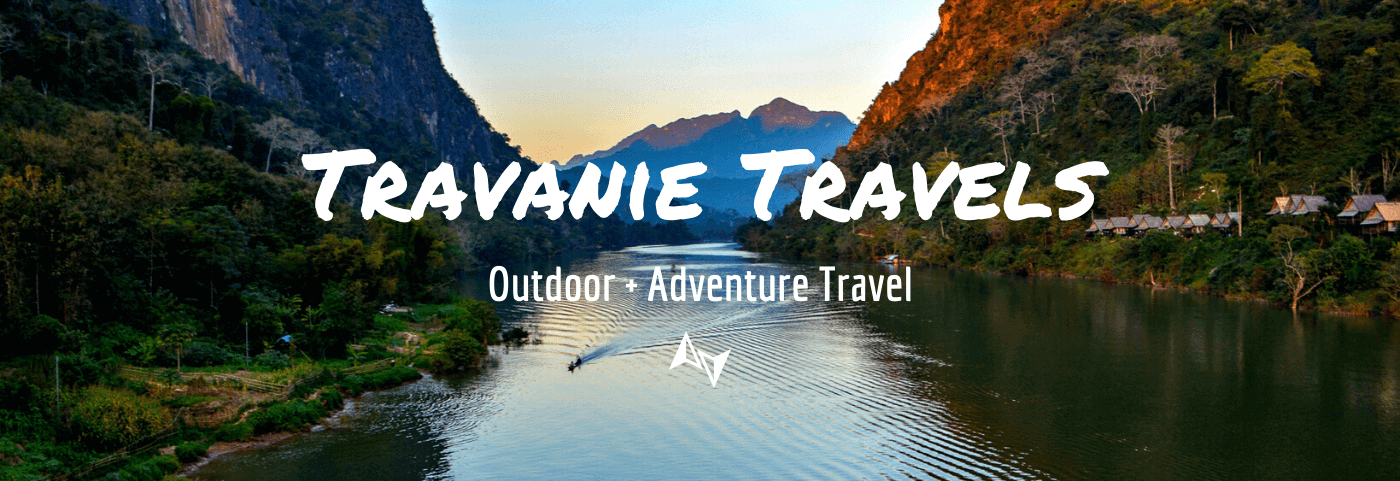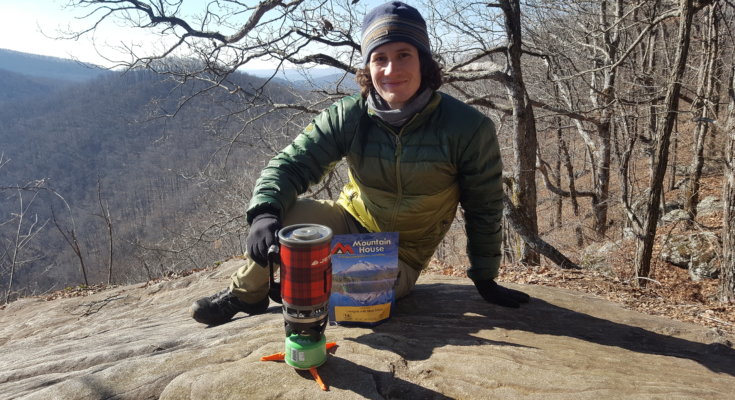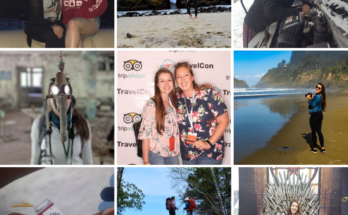Winter hiking, camping, and backpacking requires a whole different set of skills and gear. Below you will find a list of our top gear essentials for any cold-weather outdoor trip.
Trekking Poles:
They save your knees, they save your back, and then help you climb and descend faster and safer. Stephanie had trekking poles, Travis did not. One of them felt more sore than the other.
Map:
Even though the trail itself is well marked with the iconic white blazes, carrying a map is essential to aid in finding resources and locating shelters and campsites. We used the National Geographic Appalachian Trail Map and it literally became our best friend.
JetBoil:
As a simple and self-contained configuration, the JetBoil saved us space and weight in our packs since we didn’t have to carry pots or pans. We ate basic foods that only required adding hot water like oatmeal, Mountain House meals, instant rice and noodles. The JetBoil also let us easily boil water for coffee, tea, and making hot water bottles to warm our sleeping bags before bed.
SPOT Headlamp:
This headlamps compact size, light weight, and adjustable brightness and settings make it a customizable and effective lightsource for backpacking. Its different settings allow you to adjust what type of light you use and how bright it is, meaning you can save the batteries while you can or put it on full brightness when you need it. We used the Spots as our primary light source – but also carried an emergency backup light and batteries.
Nalgene Water Bottle:
Even though you will probably use a water bladder for hiking, definitely bring along a Nalgene. It’s convenient, durable, and makes water filtration ten times easier. Additionally, on cold nights you can pour boiling water into your Nalgene and toss it in your sleeping bag to help keep you warm.
Aquamira Water Purification Drops:
Most water purification tablets are emergency use only and are not a sustainable choice for drinking water. A filtration pump is definitely the best purification tool, but is not always an option in freezing winter temperatures. Using water drops allowed us to conveniently and safely fill our water bottles quickly without freezing our filter.
Clothing:
The most important thing to do on the trail and in the back country is layer your clothing. Careful consideration and experimentation should go into your clothing selection to ensure your comfort and survival while winter camping and hiking.
Our layering system consisted of a wicking base layer, insulating middle layer, and shell exterior in addition to warm socks, hats, gloves and neck gaiters. All items were made out of synthetic materials designed to keep us warm and dry while hiking. A full break down of our layering systems is available here.
Two Sleeping Pads
We actually did not bring extra sleeping pads and immediately regretted it on our first night. We each used our Klymit Static V insulated sleeping pads and thought that would suffice, however it did not. In the winter the ground freezes at night, regardless if there is snow or not, and the cold seeps through the tent, sleeping pad, and sleeping bags. An extra pad would add an extra barrier to the cold and keep you warmer. Upon our return to civilization we promptly purchased the Therm-a-Rest Lite Z reflective sleeping pads.
Ass Pad:
An ass pad sounds like a frivolous item to carry, however, it serves as an indispensable resource after a long day on the trail. Perfect for sitting on damp logs, cold rocks, or the snowy ground. Even the small layer of foam prevents the cold and wet from seeping into your clothing. You may laugh now, but you’ll want one as soon as don’t have one.




